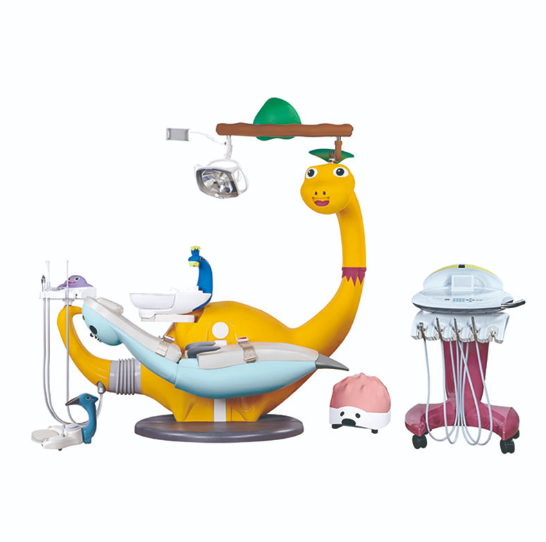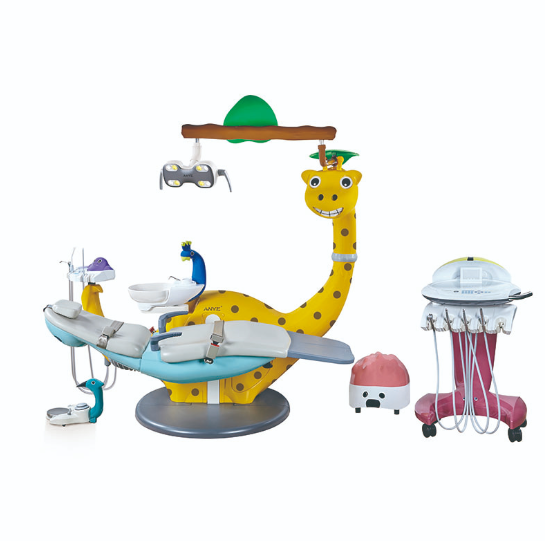Choosing the Best Bacteria-Resistant Dental Units for Pediatric Clinics
Pediatric dental clinics serve as crucial spaces for children's oral health, emphasizing the need for hygienic, bacteria-resistant dental units. In these settings, where young patients may have varying susceptibilities to infections, the selection of dental equipment becomes paramount.
This article explores the key factors and considerations involved in choosing the most suitable bacteria-resistant dental units for pediatric clinics.
This article explores the key factors and considerations involved in choosing the most suitable bacteria-resistant dental units for pediatric clinics.
Material Selection and Durability
The material and durability the be in priority in the selection of dental units. Some materials present their unique features in dental applications.
The materials used in dental unit construction significantly impact their resistance to bacterial colonization. Stainless steel, known for its non-porous surface and resistance to corrosion, ranks high for maintaining cleanliness.
However, recent advancements in high-grade plastics have also showcased impressive resistance to bacterial adhesion while offering added benefits like lightweight maneuverability and reduced noise during procedures.
Durability stands as a crucial facet, especially in pediatric clinics where equipment encounters varied usage and handling.
The materials used in dental unit construction significantly impact their resistance to bacterial colonization. Stainless steel, known for its non-porous surface and resistance to corrosion, ranks high for maintaining cleanliness.
However, recent advancements in high-grade plastics have also showcased impressive resistance to bacterial adhesion while offering added benefits like lightweight maneuverability and reduced noise during procedures.
Durability stands as a crucial facet, especially in pediatric clinics where equipment encounters varied usage and handling.
Seamless Design and Cleaning Ease
The design of the dental unit also important, because it determine the cleaning method and affect the bacterial growth. The design intricacies of dental units play a pivotal role in mitigating bacterial growth.
Units with minimal seams, crevices, and hard-to-reach areas ensure ease of cleaning and disinfection. Rounded edges and surfaces devoid of intricate designs simplify the cleaning process, crucial in pediatric clinics where thorough sanitation is pivotal. Moreover, incorporating removable components or parts for deep cleaning aids in maintaining optimal hygiene levels.
Units with minimal seams, crevices, and hard-to-reach areas ensure ease of cleaning and disinfection. Rounded edges and surfaces devoid of intricate designs simplify the cleaning process, crucial in pediatric clinics where thorough sanitation is pivotal. Moreover, incorporating removable components or parts for deep cleaning aids in maintaining optimal hygiene levels.
Integration of Antimicrobial Technology
Due to the nature of the clinics, the antimicrobial technology also should be considered. It may determine whether the dental unit is clean. The integration of antimicrobial properties into dental unit surfaces has gained prominence. Some units are infused with antimicrobial agents during manufacturing, augmenting their ability to resist bacterial colonization.
However, while such technology adds an extra layer of defense, careful consideration of the safety and longevity of these materials, particularly concerning their interaction with young patients, is paramount.
However, while such technology adds an extra layer of defense, careful consideration of the safety and longevity of these materials, particularly concerning their interaction with young patients, is paramount.
Maintenance and Sterilization Protocols
An often overlooked yet critical aspect of bacteria resistance is the establishment of robust maintenance and sterilization protocols. Clear guidelines and training for staff regarding disassembly, cleaning procedures, and sterilization techniques are imperative.
Automated cleaning systems and sterilization devices streamline the process, ensuring consistency and effectiveness in eliminating potential pathogens.
Automated cleaning systems and sterilization devices streamline the process, ensuring consistency and effectiveness in eliminating potential pathogens.
Customizability for Pediatric Comfort
Dental experiences significantly impact a child's perception of oral health. Customizable units that prioritize pediatric comfort, incorporating child-friendly designs, vibrant colors, and adjustable features, contribute to a positive and reassuring environment.
An inviting setup not only eases anxiety but also fosters a trusting relationship between the young patient and the dental practitioner, encouraging regular visits and adherence to oral health routines.
An inviting setup not only eases anxiety but also fosters a trusting relationship between the young patient and the dental practitioner, encouraging regular visits and adherence to oral health routines.
Compliance with Standards and Regulations
Adherence to industry standards and regulatory requirements is non-negotiable. Units must meet stringent health and safety standards, ensuring their efficacy in preventing bacterial proliferation.
Regular audits and certifications validate compliance, providing reassurance regarding the equipment's ability to uphold hygiene standards.
Regular audits and certifications validate compliance, providing reassurance regarding the equipment's ability to uphold hygiene standards.
Conclusion
In the realm of pediatric dentistry, meticulous consideration of bacteria-resistant dental units is pivotal.
The amalgamation of material resilience, seamless design, antimicrobial technology, robust maintenance protocols, pediatric-oriented comfort features, and regulatory compliance is imperative in fostering a sterile and welcoming environment.
Prioritizing these factors ensures that pediatric dental clinics maintain exemplary standards, nurturing healthy smiles while safeguarding the well-being of their young patients.
The amalgamation of material resilience, seamless design, antimicrobial technology, robust maintenance protocols, pediatric-oriented comfort features, and regulatory compliance is imperative in fostering a sterile and welcoming environment.
Prioritizing these factors ensures that pediatric dental clinics maintain exemplary standards, nurturing healthy smiles while safeguarding the well-being of their young patients.



Leave a comment